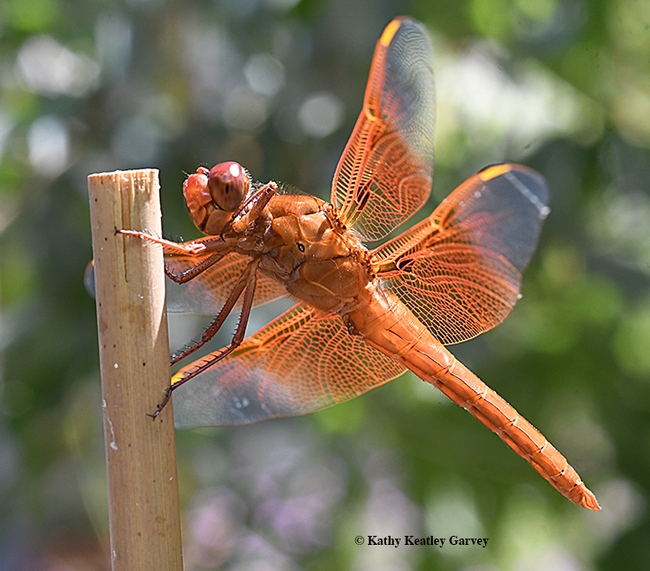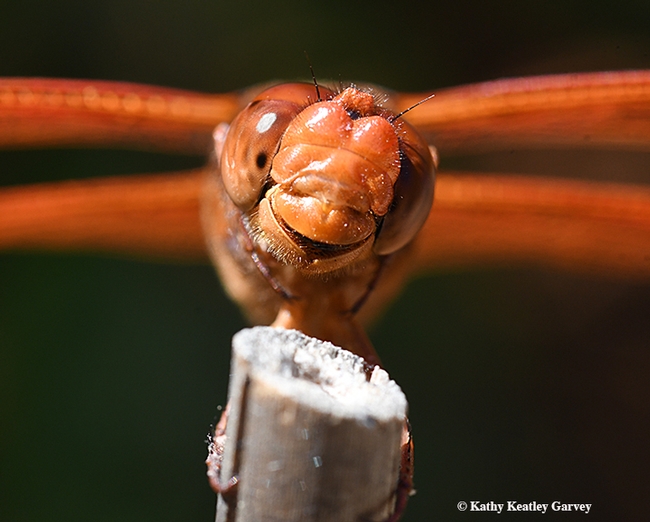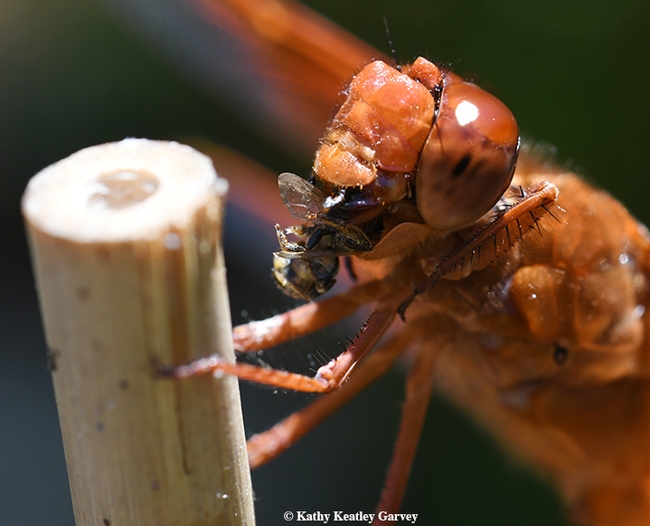How magical are the dragonflies.
They zig-zag through the pollinator garden, a perfect portrait of a predator: multifaceted eyes, strong wings, and mouthparts that include a toothed jaw and flap like labrium.
They're an ancient insect: scientists have found fossil dragonflies that date back 325 million years ago.
Bank robber Willie Sutton (1901-1980) reportedly said he robbed banks "because that's where the money is." Predators, like dragonflies, frequent pollinator gardens because that's where the food is--food like native bees and syrphid flies.
Like other dragonflies, red flameskimmers, Libellula saturata, frequent our pollinator garden because of "Sutton's law." We welcome them with bamboo-stake perches. They circle the garden on their hunt, snag prey, and return to the perch to consume it.
Sometimes, if you're lucky, you'll see a dragonfly eat a bee (lucky for a nature photographer who wants to share a little bit of how nature works, but not so much for the bee!).
We can't tell what bee was on this male flameskimmer's menu, but it appears to be a longhorned bee, maybe Melissodes agilis, family Apidae.
It's eat and "bee eaten" in a pollinator garden.
Attached Images:

This is a male flameskimmer, Libellula saturata, photographed in Vacaville, Calif. (Photo by Kathy Keatley Garvey)

Close-up of a firecracker red flameskimmer, Libellula saturata. (Photo by Kathy Keatley Garvey)

Dinner time! A red flameskimmer, Libellula saturata, munches on a bee, probably a longhorned bee, Melissodes agilis. (Photo by Kathy Keatley Garvey)